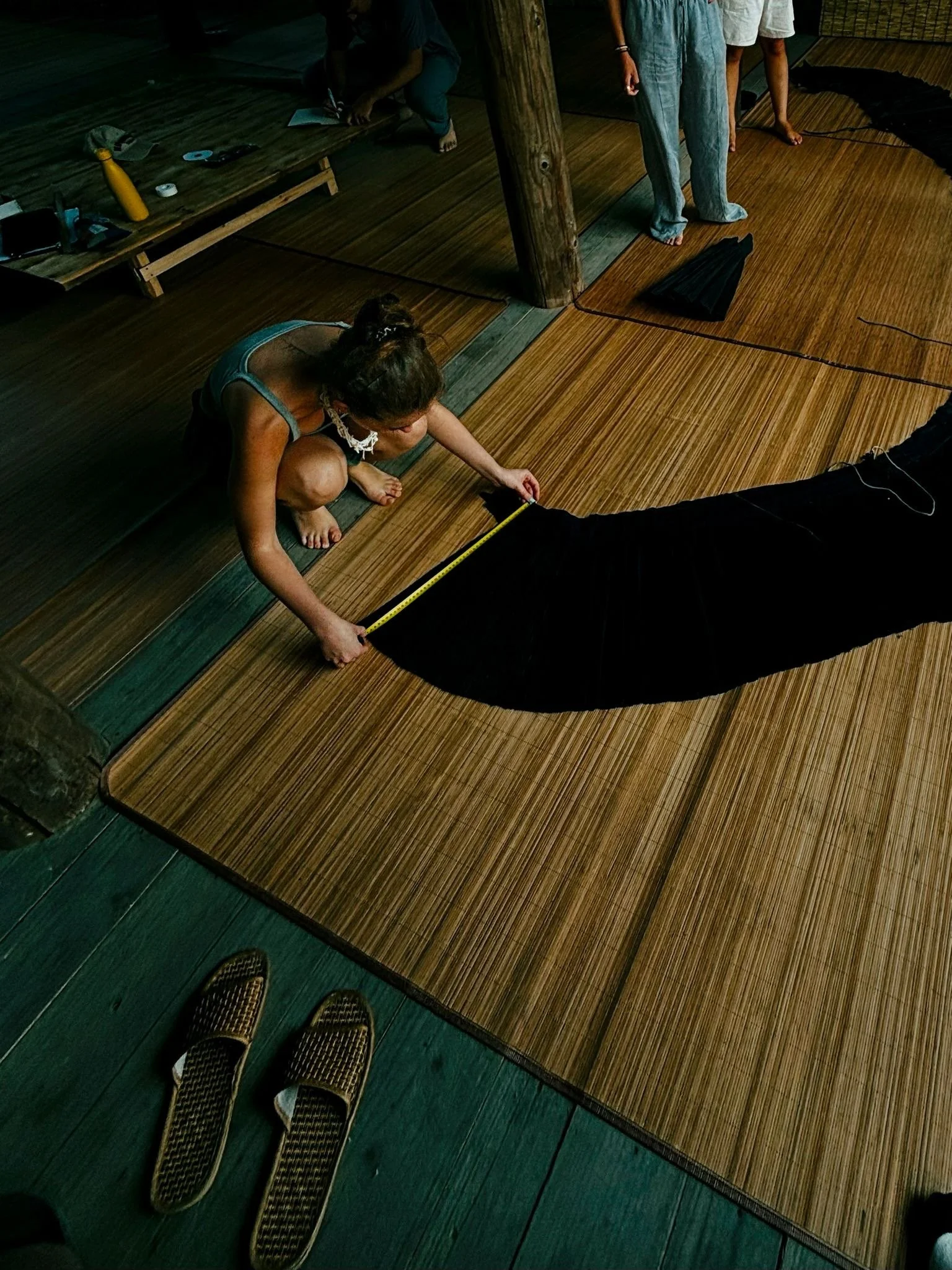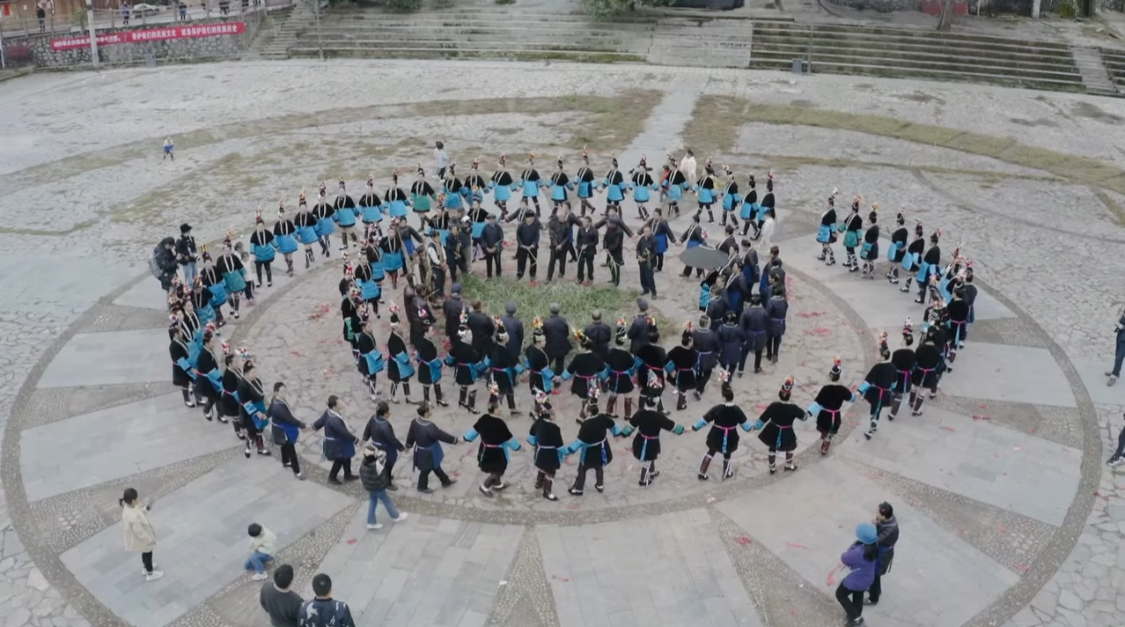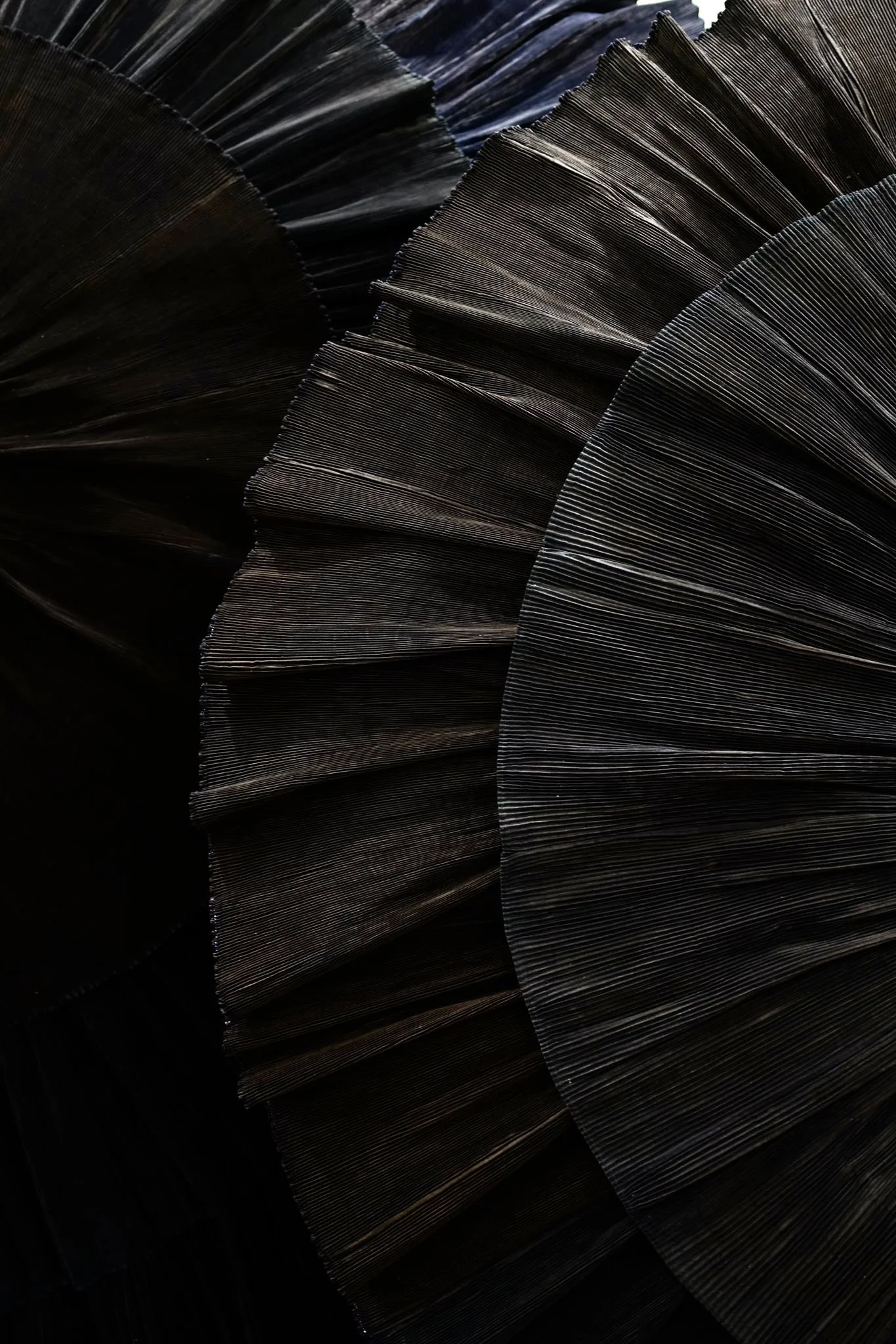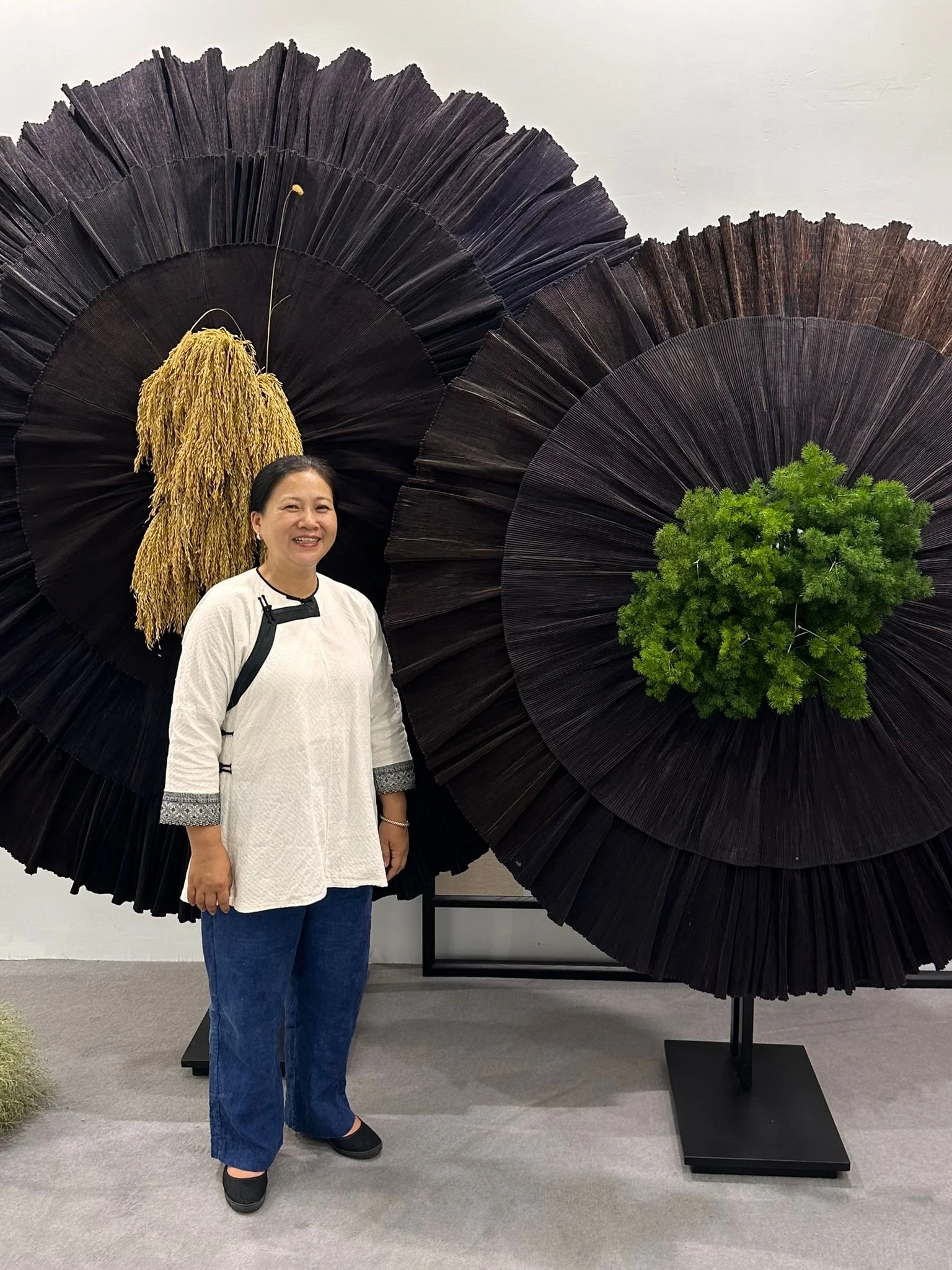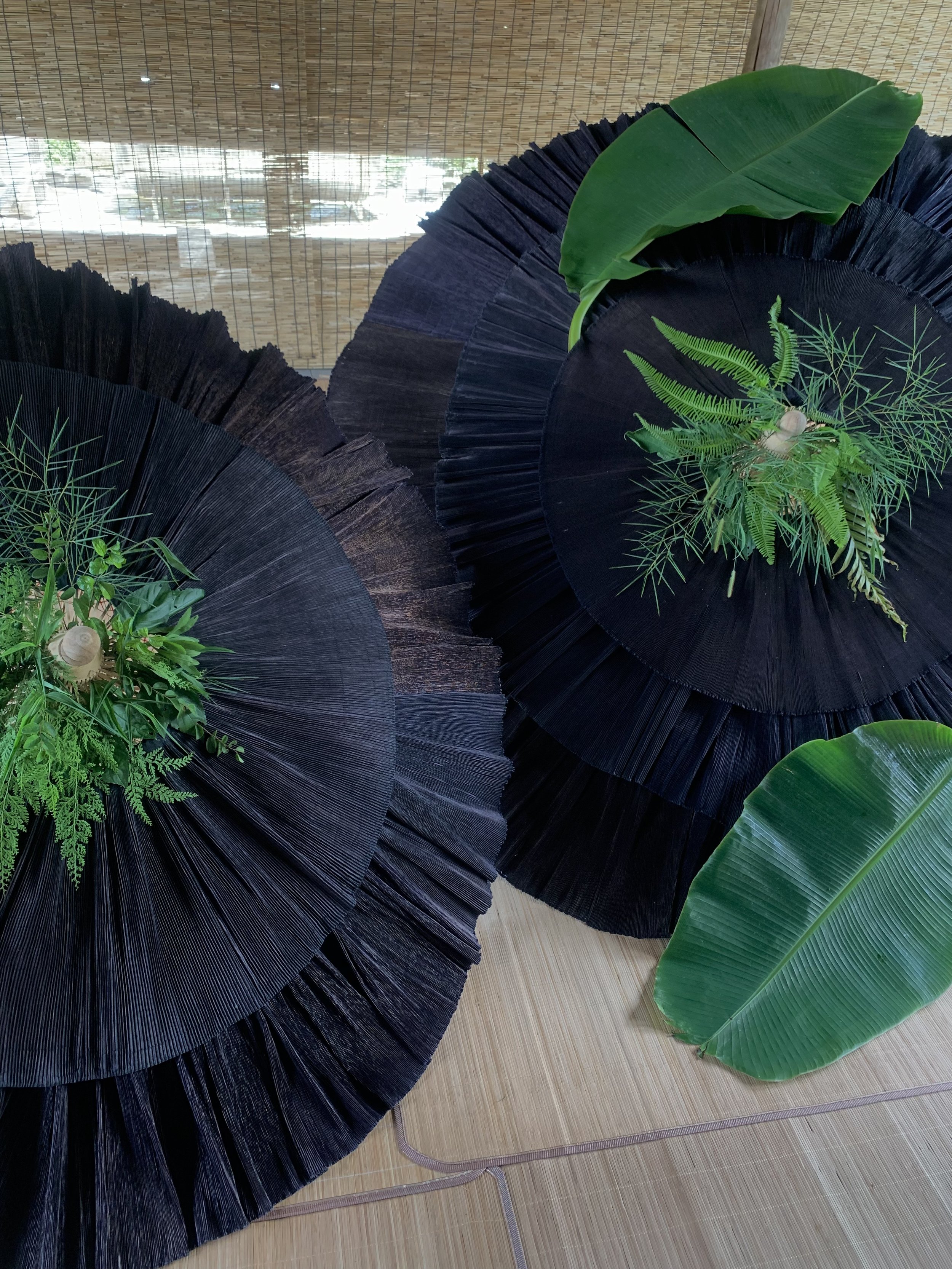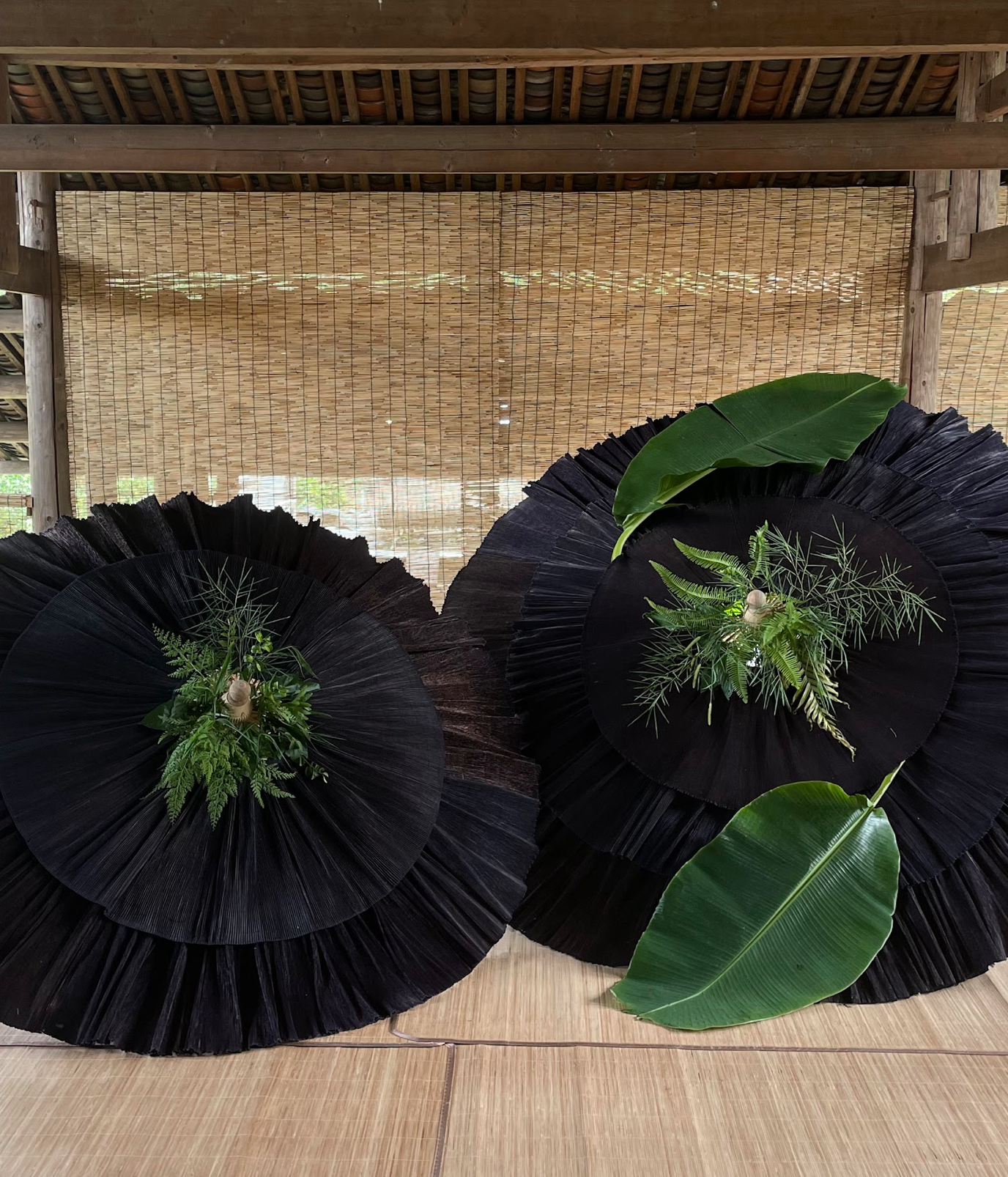
A Tribute to the rain Divinity of the Dong woman in South China.
TRIBUTE TO SAMA
Cultural installation
Two bamboo umbrellas surrounded by the pleated skirts of the Dong woman in Guizhou pay homage to Sama, their rain deity, and to the ritual performed by them to ask for her blessings.
Indigo, treated as a living being, dyes these pieces that unite spirituality and material life.
A work of listening, respect, and co-creation.
-
The fabric is handwoven and then naturally dyed with the indigo plant. Then, the craftswomen make tiny pleats of the fabric along a wooden barrel. Once the pleated fabric encircles the barrel, it is subjected to strong tension through ropes that hold it in place and keep it firm for several months. Then, in proper time, the fabric is unrolled and shows its unique pleats (07).
The pleated skirt travel generations. They must beat least 5 years enrolled, to be used only for marriage ceremonies.
-
The mother of the Dong people. the Sama Festival celebration (04, 05), when villagers gather for a sacred ceremony to ask for the blessings of Sama. On this ceremony, the village shaman carries a bamboo umbrella — a symbol of Sama’s energy, as the rain deity and nurturing mother protecting her children.
This is why, structure from the installation is a bamboo umbrella, covered by the pleated skirts that represent the people dancing in circles for Sama.
-
Indigo, the dye that the artisans use, a symbol rooted in their culture. Indigo is a living being that must be cared for and respected. We discovered, thanks to the extraordinary women with whom we lived, that the indigo “ is happy ” when you approach it with an open heart, respect and sensitivity.
This is why, we represented life coming out as nature, meaning the indigo is alive.
Their way of living and creating is a dialogue between nature, cultural identity and spirituality. Each piece is a story that speaks of respect for the living and for a cultural heritage that connects us to something much bigger than ourselves.
01
02
03
04
05
06
07


